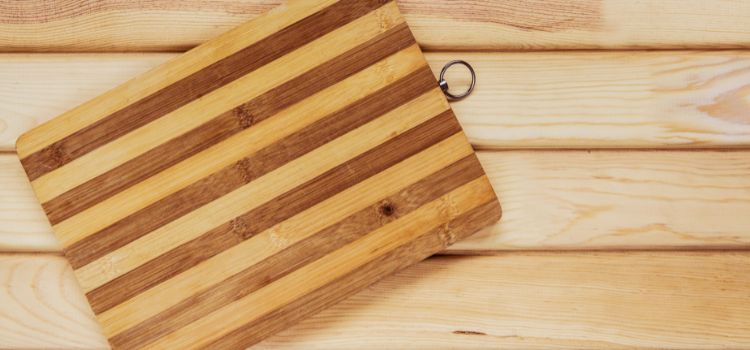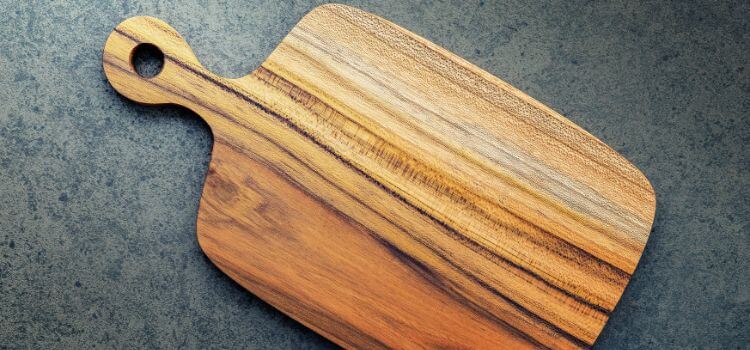As an Amazon Associate, I earn from qualifying purchases

In the realm of kitchen tools, cutting boards are indispensable, serving as the backbone of food preparation. The choice of material for these boards can significantly affect their functionality and longevity. Enter aspen wood—a lesser-known but intriguing option for cutting boards. Aspen is a type of hardwood commonly found in North America and is known for its light color and fine grain.
While it is not as mainstream as other materials like maple or walnut, aspen wood is worth considering due to its unique characteristics. This article delves into the properties of aspen wood, comparing it with other popular materials, and evaluates its suitability for cutting boards.
Properties of Aspen Wood
Aspen wood is celebrated for its strikingly light hue and smooth texture, which can lend a clean and contemporary look to any kitchen. But how does it stand up in terms of durability? Aspen is relatively soft compared to other hardwoods, with a lower density that might raise concerns regarding its resilience. However, this softness can be advantageous as it is gentler on knife edges, potentially prolonging the sharpness of your kitchen tools.
The grain pattern of aspen is typically straight and uniform, which adds to its aesthetic appeal and contributes to a smooth surface that is easy to clean. The wood’s low porosity means it does not absorb moisture as readily as some other woods, helping to prevent warping and bacterial growth—a crucial consideration for any cutting board material.
In terms of hardness, aspen ranks lower on the Janka hardness scale than woods like maple or oak. This softer characteristic means it might show knife marks more readily and may not be as robust in high-impact scenarios, such as heavy chopping.
Comparison with Other Cutting Board Woods
When considering cutting board options, maple and walnut often come to mind due to their proven track records in kitchen settings. Maple, particularly hard maple, is renowned for its durability and resistance to knife cuts, making it a staple choice for professional chefs and home cooks alike. Its tight grain structure and attractive appearance make it both functional and visually appealing.
Walnut, on the other hand, offers a darker, richer color and is slightly softer than maple, providing a balance between durability and aesthetics. While it may not be as hard as maple, walnut is still tough enough to withstand regular kitchen use without excessive wear.
Comparing aspen with these woods, one might note that aspen is lighter and softer, which might be a double-edged sword in terms of functionality. While it offers a gentle surface for knives, it may require more frequent maintenance and replacement due to its propensity to show wear.
Pros and Cons of Using Aspen for Cutting Boards

Advantages of Aspen Wood:
- Lightweight: Easy to handle and move around the kitchen.
- Affordability: Generally more budget-friendly than traditional hardwoods.
- Aesthetic Appeal: Fine grain and smooth surface provide a clean, modern look.
- Hygienic Properties: Low porosity reduces the risk of bacterial contamination, promoting kitchen hygiene.
Drawbacks of Aspen Wood:
- Softness: May not withstand heavy chopping tasks; prone to knife marks and scratches.
- Appearance Over Time: Can affect the board’s look, potentially leading to a shorter lifespan.
- Maintenance Needs: Requires regular oiling to maintain condition and prevent drying out.
Conclusion
So, is aspen a good choice for cutting boards? The answer depends largely on your specific needs and preferences. If you are seeking a lightweight, aesthetically pleasing board that is gentle on knives and cost-effective, aspen could be an excellent choice. It suits those who engage in light to moderate meal preparation and who appreciate the wood’s natural beauty.
However, if you require a board that can withstand heavy-duty kitchen tasks and offers minimal maintenance, you might lean towards harder woods like maple or walnut. These woods provide greater durability and longevity, making them a preferred choice for those with more demanding culinary pursuits.
In conclusion, aspen wood presents a viable option for cutting boards, especially for those prioritizing aesthetics and knife friendliness over extreme durability. It is important to weigh the pros and cons in the context of your kitchen habits and to maintain your board properly to maximize its lifespan. Ultimately, the choice of cutting board material should align with both practical needs and personal style, ensuring your kitchen remains both functional and inviting.
FAQ
Is aspen wood food safe?
Yes, aspen wood is generally considered food safe when properly treated and maintained. Its low porosity helps resist moisture absorption, reducing bacterial growth potential. Regularly oiling aspen boards enhances their durability and hygiene, making them a suitable choice for food preparation surfaces.
What woods should not be used for cutting boards?
Softwoods like pine and cedar should be avoided for cutting boards due to their porous nature, which can harbor bacteria and odors. Additionally, they are prone to excessive knife marks and wear. Avoid exotic woods with toxic compounds, such as teak, unless specifically treated for food safety.
Is aspen good for butcher block?
Aspen is not ideal for butcher blocks due to its softness, which may lead to quicker wear and visible knife marks. Butcher blocks typically require harder woods like maple or oak that offer better durability and can withstand heavy-duty chopping and frequent use.
As an Amazon Associate, I earn from qualifying purchases